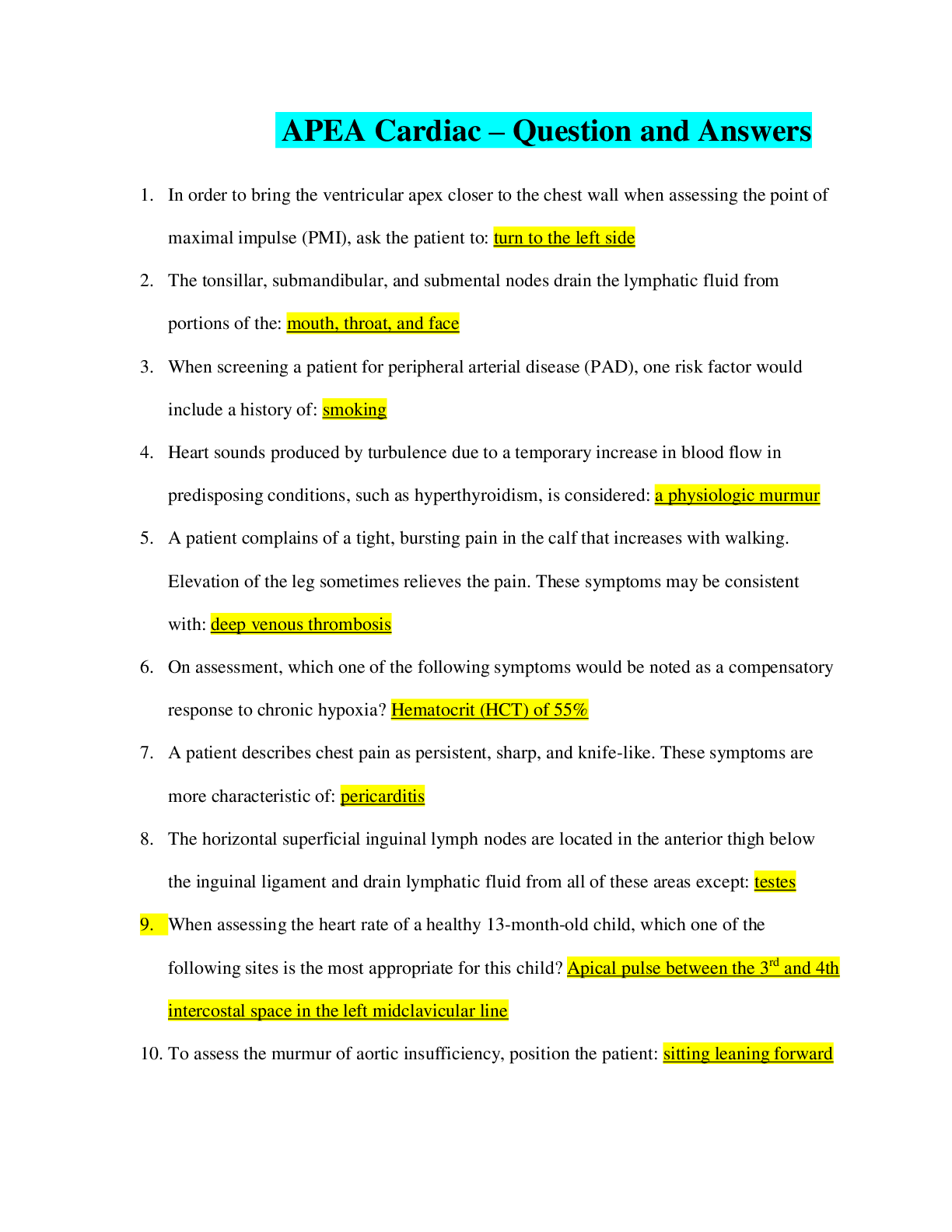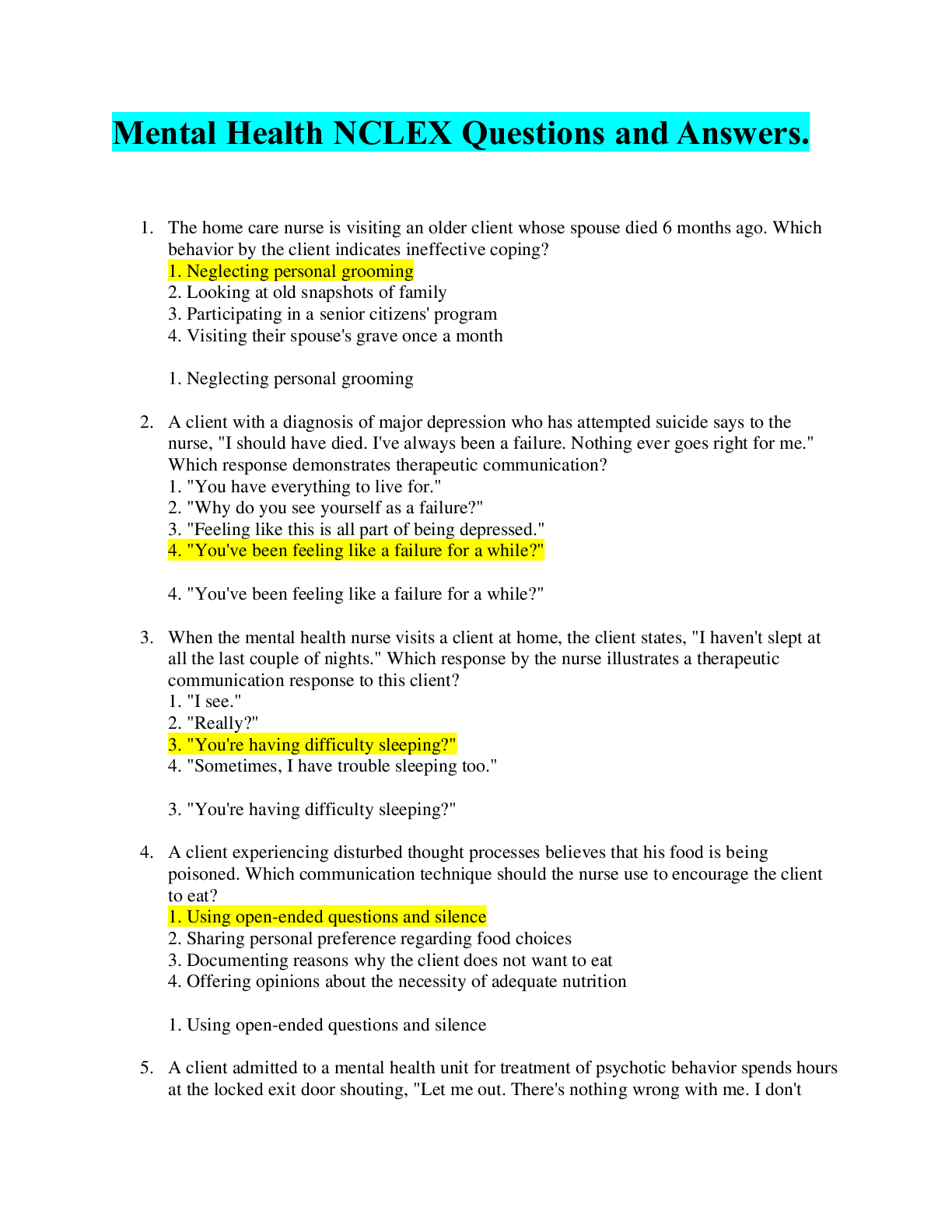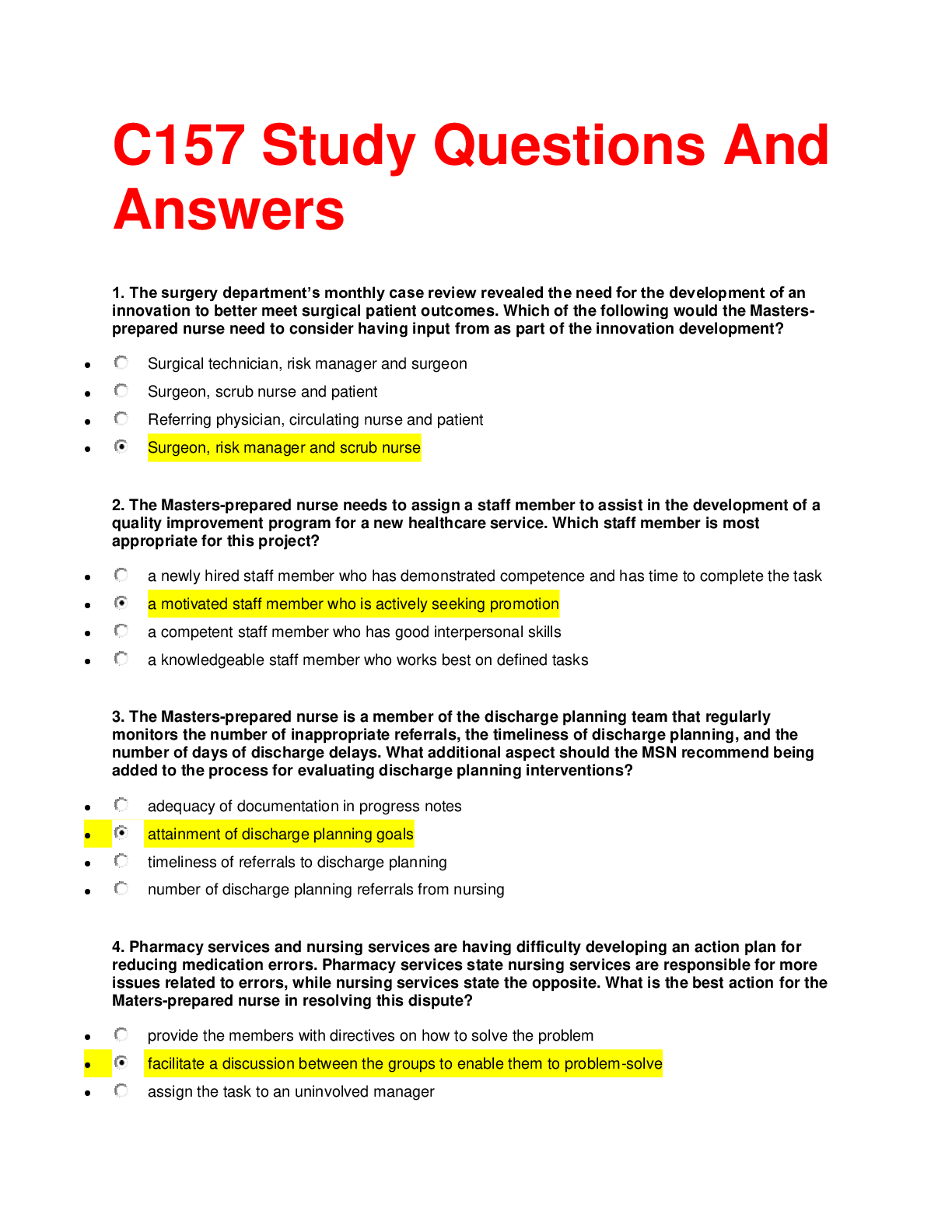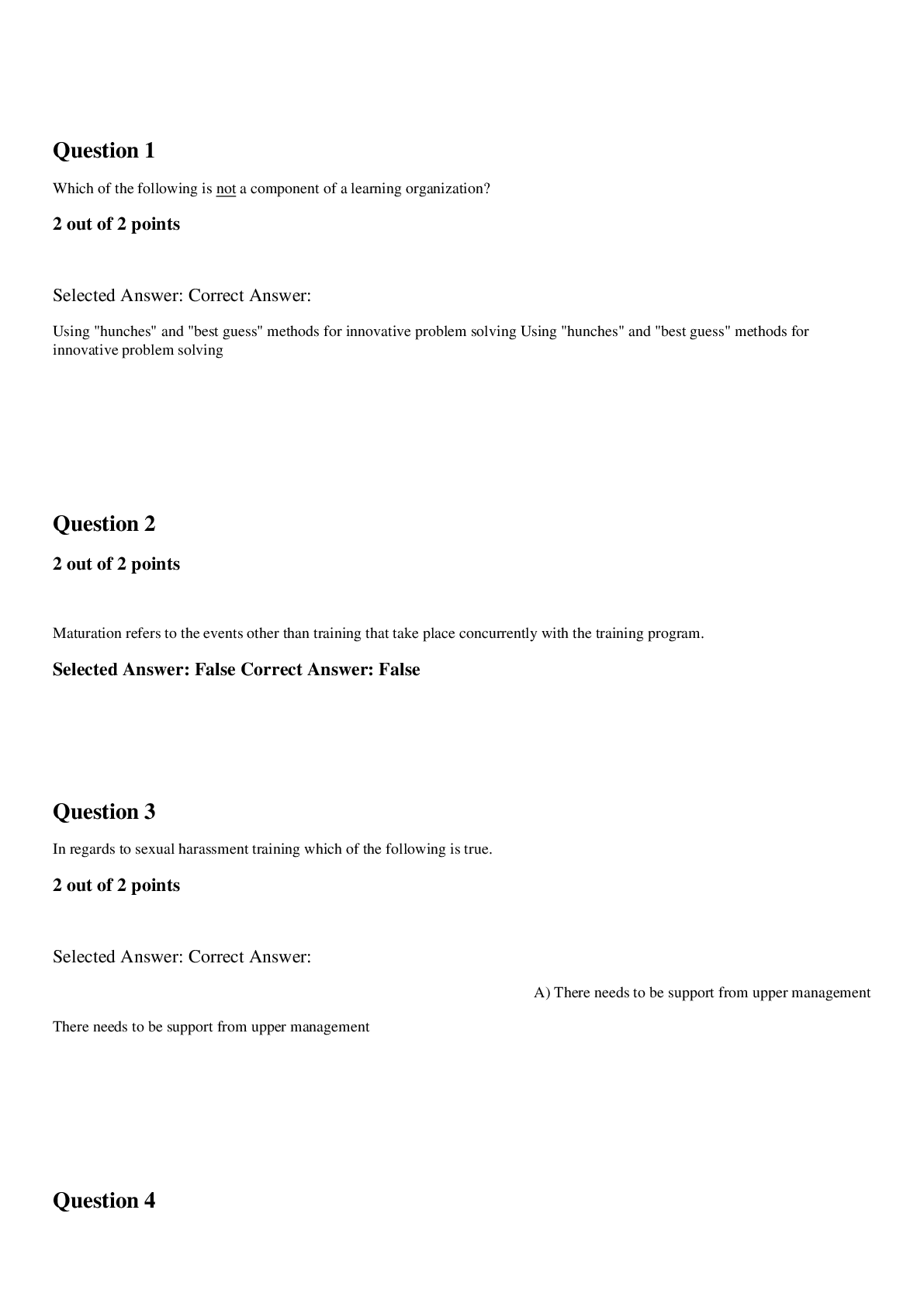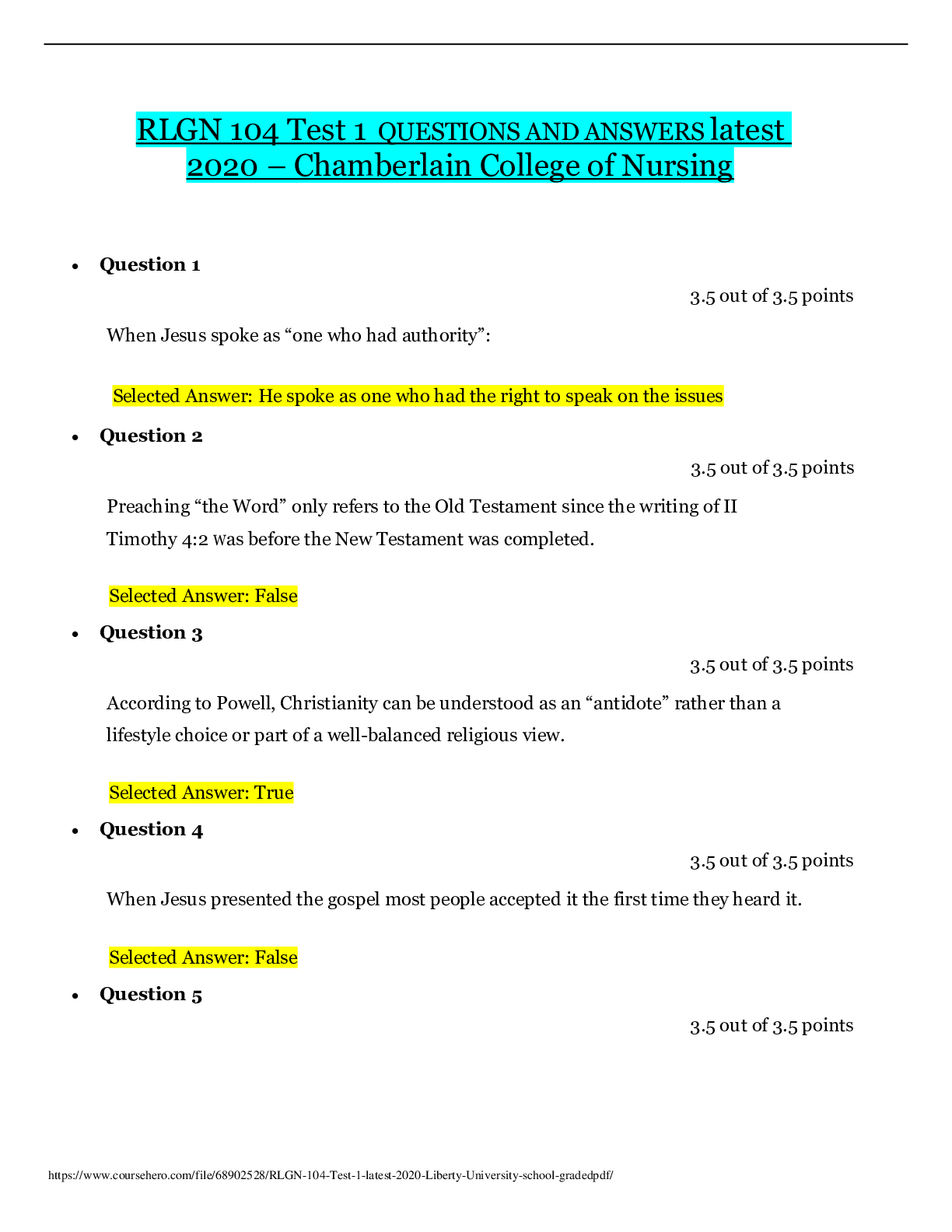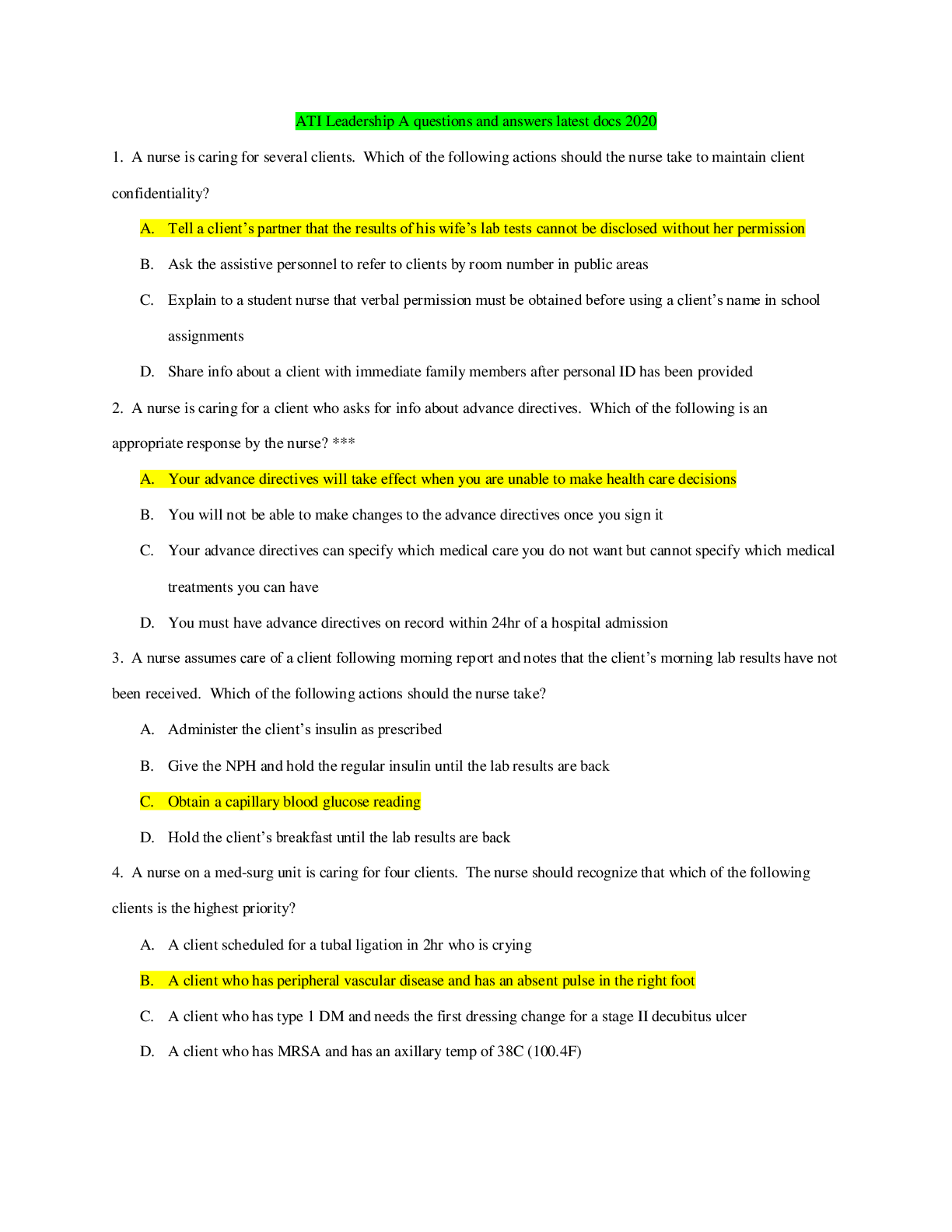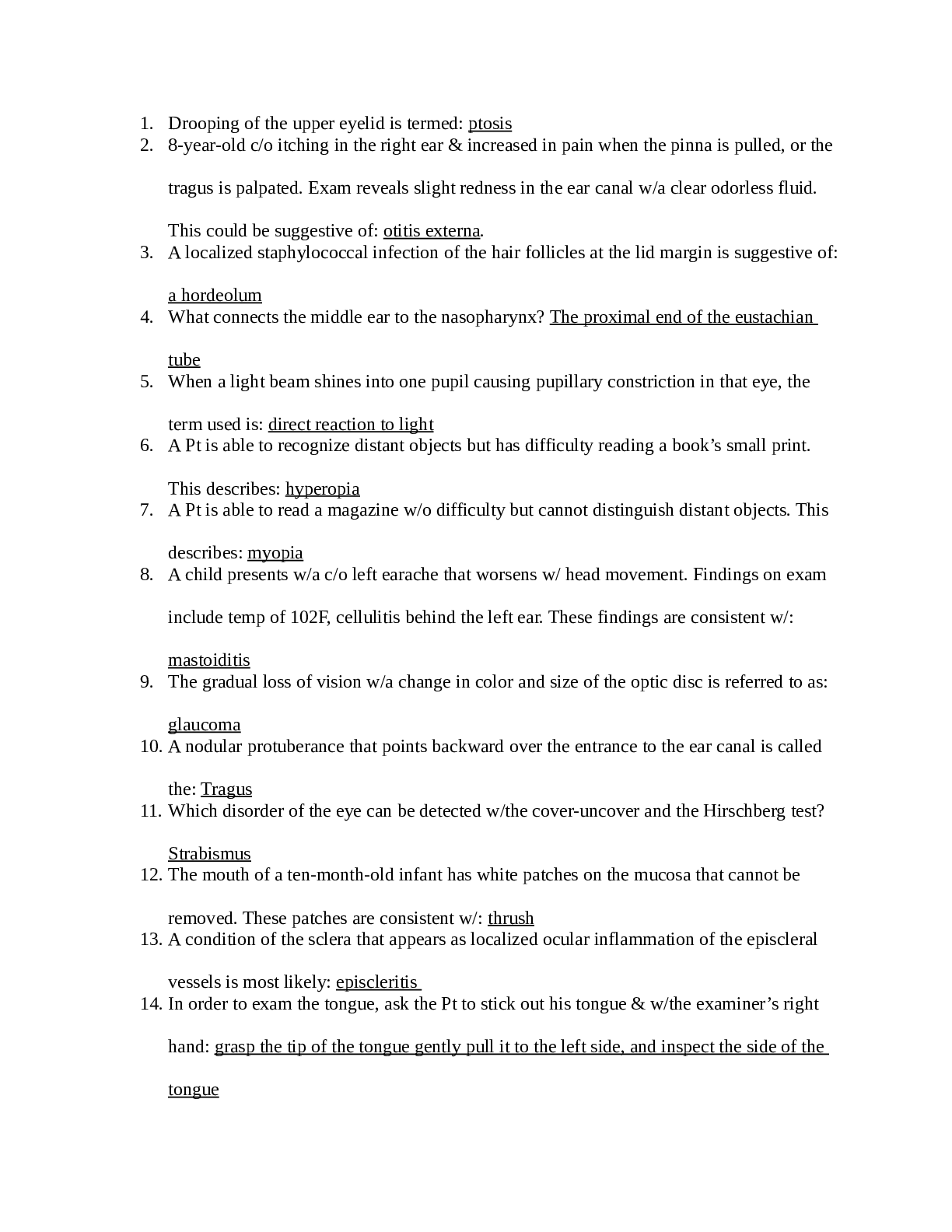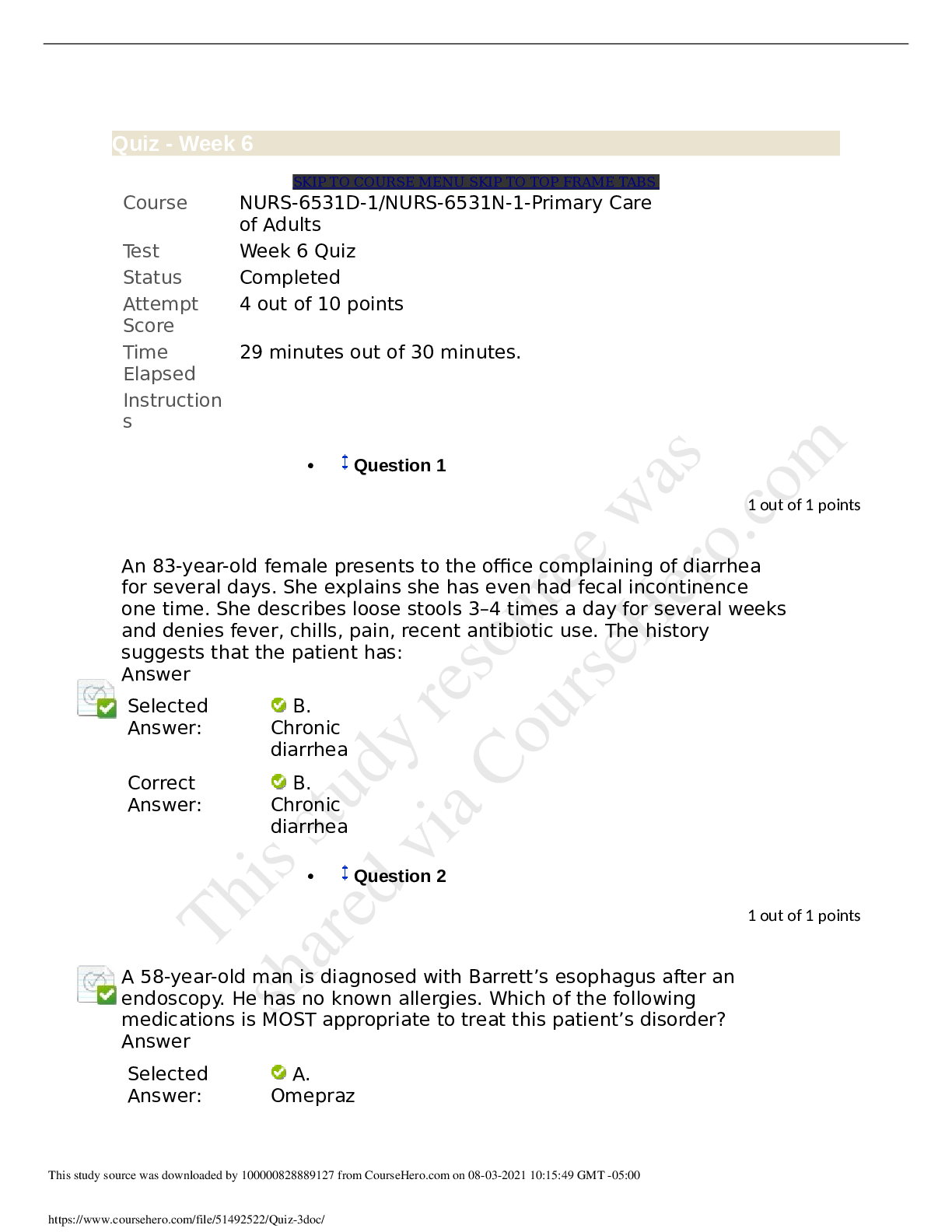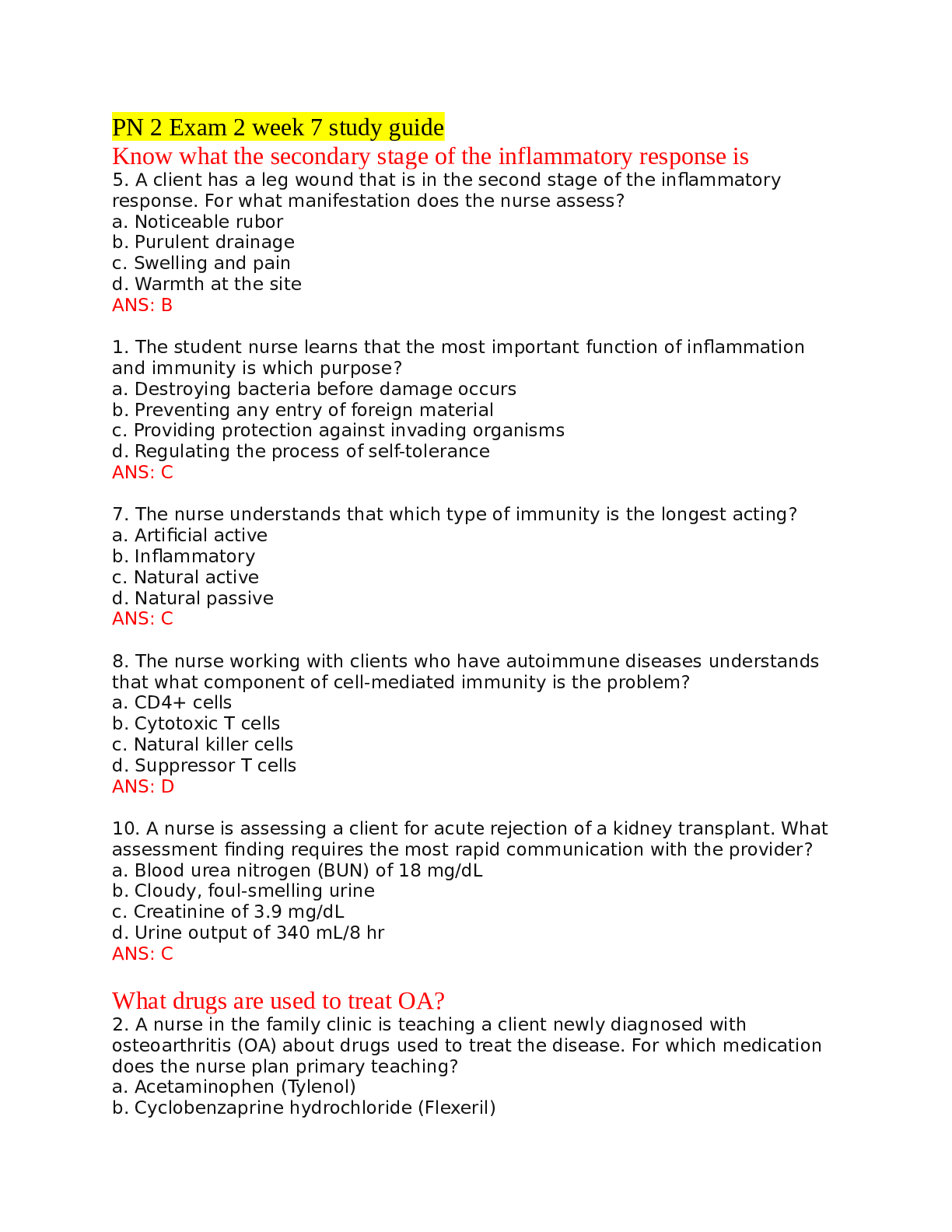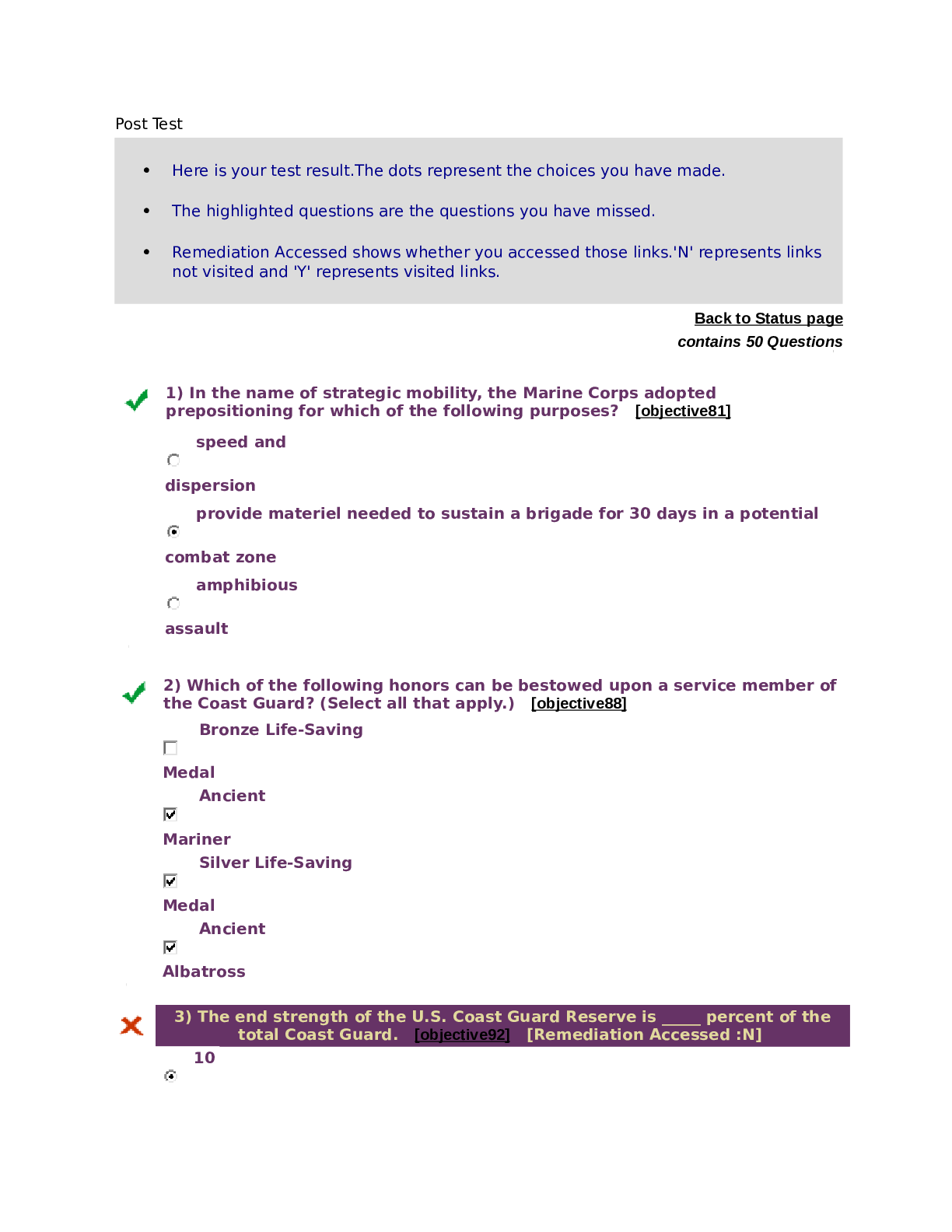Statistics > QUESTIONS & ANSWERS > Sophia Milestone 3 Statistics Questions and Answers Latest Updated 2022 Rated A (All)
Sophia Milestone 3 Statistics Questions and Answers Latest Updated 2022 Rated A
Document Content and Description Below
You passed this Milestone 18 questions were answered correctly. 9 questions were answered incorrectly. 1 Ryan is playing a multiplication game with a pile of 26 cards, each with a number on them. ... Each turn, he flips over two of the cards, and has to multiply the numbers. How many possible outcomes are there on Ryan's first turn flipping two cards? 676 26 650 52 RATIONALE We can use the general counting principle and note that for each step, we simply multiply all the possibilities at each step to get the total number of outcomes. If we assume that the numbers are 1 - 26, then the overall number of outcomes is: Note that once a number is chosen it cannot be chosen again. So the number of possible outcomes for the first card would be 26 since they could choose any card number 1 through 26. However, the second card chosen would only have 25 possible outcomes since the first card has already been drawn. CONCEPT Fundamental Counting Principle 2 What is the probability of NOT drawing a face card from a standard deck of 52 cards? 6/29/2020 Sophia :: Welcome https://www.sophia.org/spcc/introduction-to-statistics-2/milestone_take_feedbacks/4319165 2/18 RATIONALE Recall that the probability of a complement, or the probability of something NOT happening, can be calculated by finding the probability of the event happening, and then subtracting that from 1. Note that there are a total of 12 face cards in a standard deck of 52 cards. So the probability of NOT getting a face card is equivalent to: CONCEPT Complement of an Event 3 Using the Venn Diagram below, what is the conditional probability of event B occurring, assuming event A has happened [P(B|A)]? 6/29/2020 Sophia :: Welcome https://www.sophia.org/spcc/introduction-to-statistics-2/milestone_take_feedbacks/4319165 3/18 0.77 0.63 0.24 0.41 RATIONALE To get the probability of B given A has occurred, we can use the following conditional formula: The probability of A and B is the intersection, or overlap, of the Venn diagram, which is 0.41. The probability of A is all of Circle A, or 0.24 + 0.41 = 0.65. CONCEPT Conditional Probability 4 Annika was having fun playing poker. She needed the next two cards dealt to be diamonds so she could make a flush (five cards of the same suit). There are 15 cards left in the deck, and five are diamonds. What is the probability that the two cards dealt to Annika (without replacement) will both be diamonds? Answer choices are in percentage format, rounded to the nearest whole number. 10% 29% 13% 33% RATIONALE If there are 15 cards left in the deck with 5 diamonds, the probability of being dealt 2 diamonds if they are dealt without replacement means that we have dependent events because the outcome of the first card will affect the probability of the second card. We can use the following formula: 6/29/2020 Sophia :: Welcome https://www.sophia.org/spcc/introduction-to-statistics-2/milestone_take_feedbacks/4319165 4/18 The probability that the first card is a diamond would be 5 out of 15, or . The probability that the second card is a diamond, given that the first card was also a diamond, would be because we now have only 14 cards remaining and only 4 of those cards are diamond (since the first card was a diamond). So we can use these probabilities to find the probability that the two cards will both be diamonds: CONCEPT "And" Probability for Dependent Events 5 Using this Venn diagram, what is the probability that event A or event B occurs? 0.77 0.36 0.68 0.41 RATIONALE To find the probability that event A or event B occurs, we can use the following formula for overlapping events: 6/29/2020 Sophia :: Welcome https://www.sophia.org/spcc/introduction-to-statistics-2/milestone_take_feedbacks/4319165 5/18 The probability of event A is ALL of circle A, or 0.24 + 0.41 = 0.65. The probability of event B is ALL of circle B, or 0.12 + 0.41 = 0.53. The probability of event A and B is the intersection of the Venn diagram, or 0.41. We can also simply add up all the parts = 0.24 + 0.41 + 0.12 = 0.77. [Show More]
Last updated: 2 years ago
Preview 1 out of 18 pages
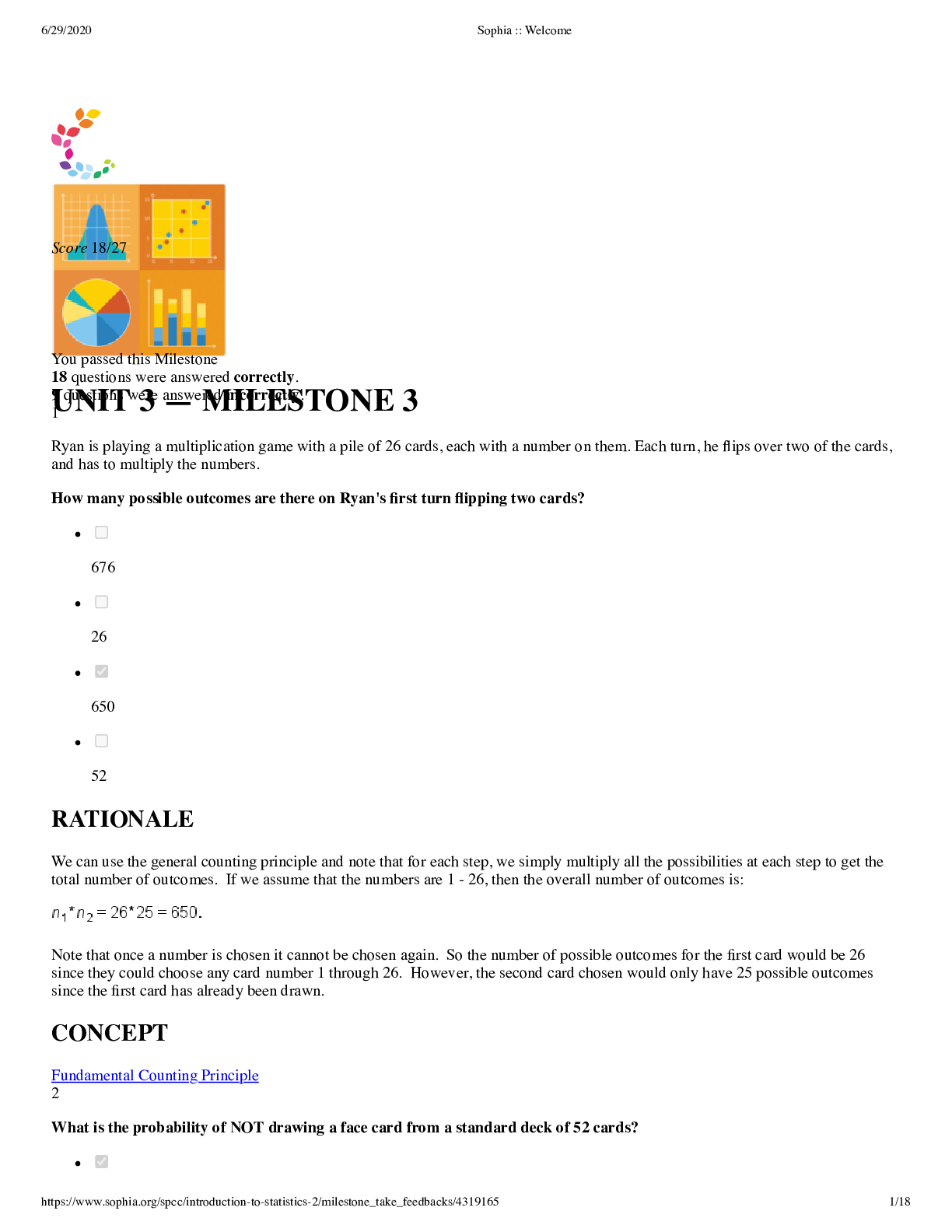
Buy this document to get the full access instantly
Instant Download Access after purchase
Buy NowInstant download
We Accept:

Reviews( 0 )
$13.00
Can't find what you want? Try our AI powered Search
Document information
Connected school, study & course
About the document
Uploaded On
Jun 23, 2022
Number of pages
18
Written in
Additional information
This document has been written for:
Uploaded
Jun 23, 2022
Downloads
0
Views
151
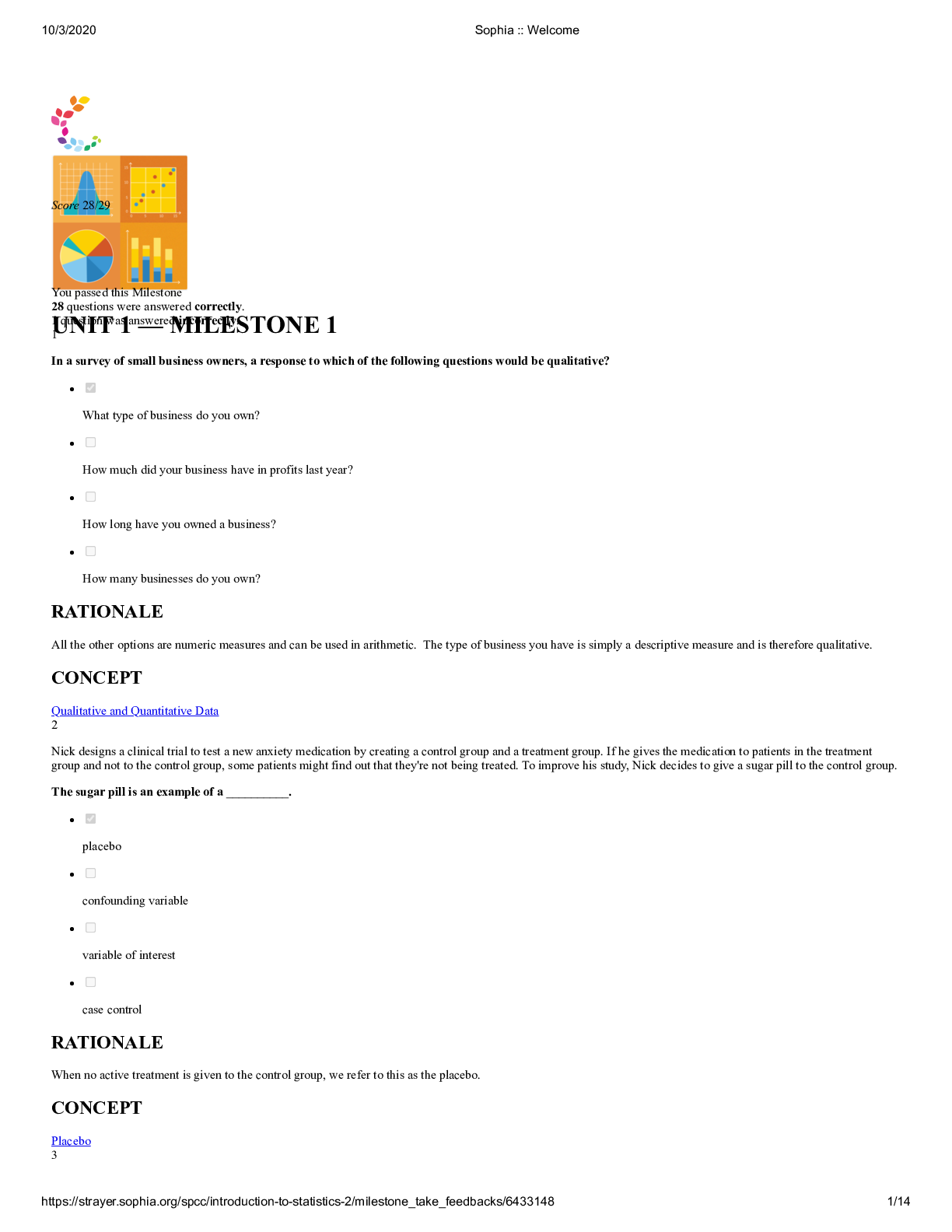

.png)











